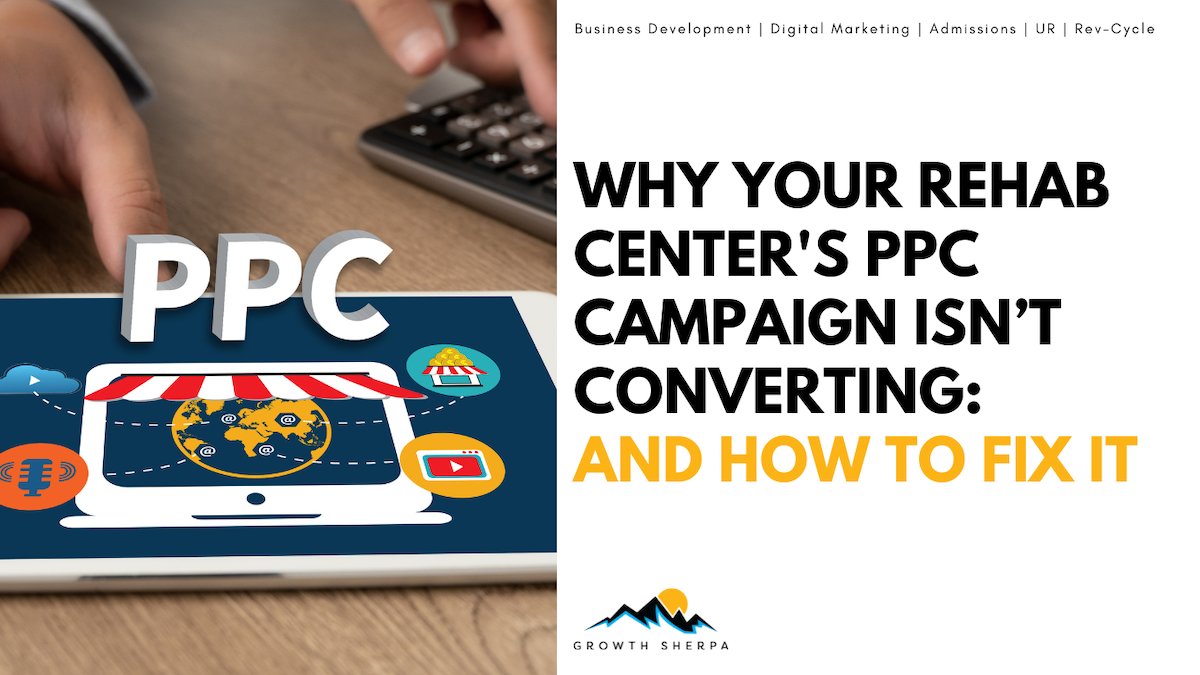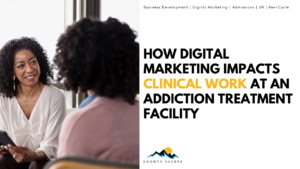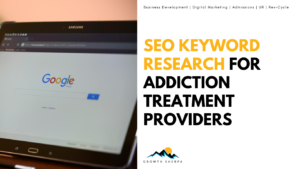Addiction treatment marketing isn’t cheap—especially when it comes to PPC. Google Ads alone can rack up thousands of dollars a month, and with CPCs for behavioral health terms consistently among the most expensive online, it’s no surprise rehab executives expect a strong return. But what happens when the clicks come in, the budget is spent, and the phones stay quiet?
You don’t have a visibility problem. You have a conversion problem. And in addiction treatment PPC, that can be a silent killer to your marketing ROI.
Let’s walk through some of the most common reasons why your rehab marketing conversion rate is underperforming—and exactly how to fix it.
You’re Bidding on the Wrong Intent
Clicks don’t equal conversions, and in no industry is that more obvious than behavioral health. Broad match keywords like “rehab,” “help for addiction,” or “drug abuse support” might drive high traffic, but are they attracting people who are ready to pick up the phone today?
Probably not.
You need to drill deeper. Focus your campaign strategy on transactional, high-intent keywords such as “admissions to drug rehab near me,” “alcohol detox program accepting patients,” or “inpatient addiction treatment now.” These searches come from people (or loved ones) in crisis who are likely much closer to making a care decision. Craft your campaigns around this buyer’s journey. Use SKAGs (Single Keyword Ad Groups), leverage exact match for key terms, and be brutal about negative keywords to filter out curiosity clicks.
Your Ads and Landing Pages Don’t Match
Here’s a scenario we see far too often: A user clicks on an ad that says “24/7 Alcohol Detox Admissions” and is directed to a homepage that has no mention of detox, alcohol, or 24/7 anything. Bounce.
In behavioral health paid search, relevance is everything. Your landing page should directly reflect the promise made in the ad. If your ad mentions same-day admissions, your landing page should have a clear CTA for immediate contact. If your ad talks about a specific program (like trauma-informed care or women’s-only treatment), then that content should be prominent and easy to navigate.
It’s not just about alignment—it’s about trust. Users in crisis are scanning your page for signs of credibility, clarity, and support. Add testimonials, licensing badges, accreditation logos, real photos of staff or facilities, and don’t bury your phone number in the footer. Every visual and line of copy should make them feel one thing: safe to reach out.
Tracking Is the Real Conversion Killer
Here’s the ugly truth: many behavioral health organizations think their PPC isn’t working when the real issue is they’re not tracking it correctly.
You need more than Google Ads conversions. You need a dynamic call tracking system (like CallRail or CallTrackingMetrics) that shows which campaigns, keywords, and devices drove each phone call. Then you need to feed that data into your CRM and admissions process to know which leads converted and how.
Are calls getting answered? Are admissions coordinators logging them correctly? Is form-fill data making it into your CRM? Is GA4 tracking clean?
Without answers to those questions, you’re flying blind—and worse, you’re making optimizations based on assumptions rather than insights. A proper behavioral health paid search audit should uncover these technical blind spots so you can close the loop between ad spend and admissions.
The Real Problem May Be After the Click
This is where most marketing agencies stop—but Growth Sherpa doesn’t.
Let’s say your addiction treatment PPC campaigns are driving calls. If those calls aren’t converting into admissions, then you don’t have a PPC problem—you have a people, process, or tech problem.
Maybe your call center is understaffed or routing isn’t optimized. Maybe your admissions team needs a script refresh or better objection-handling. Maybe your CRM isn’t flagging repeat leads or duplicate inquiries. All of these things impact conversion—and none of them have anything to do with your ads.
That’s why we approach PPC as part of a full-funnel system, not a standalone channel. Because in this space, marketing doesn’t exist in a silo. If we can trace missed conversions to a specific breakdown in admissions, we’ll bring it to you with recommendations to fix it—whether that’s workflow automation, staff training, or integration improvements.
What You Can Do Today
If you’re reading this and realizing that your campaigns haven’t been fully optimized—or that no one’s ever even audited your lead journey—that’s okay. You’re not behind. You’re just in a high-stakes industry where the details matter more.
Here’s where to start:
- Run a behavioral health paid search audit (or have someone like us do it)
- Review your keyword strategy for intent, not just volume
- Align ads with landing pages through message match and consistent CTAs
- Set up or double-check your call tracking and attribution setup
- Audit your admissions workflow and lead handling speed
Every click is a potential life. When your system works, it saves more of them—and delivers a better return on every dollar spent.
If you’re ready to turn your underperforming PPC campaigns into an engine for growth and impact, let’s talk. Because the leads are out there—they just need the right path to find you.




